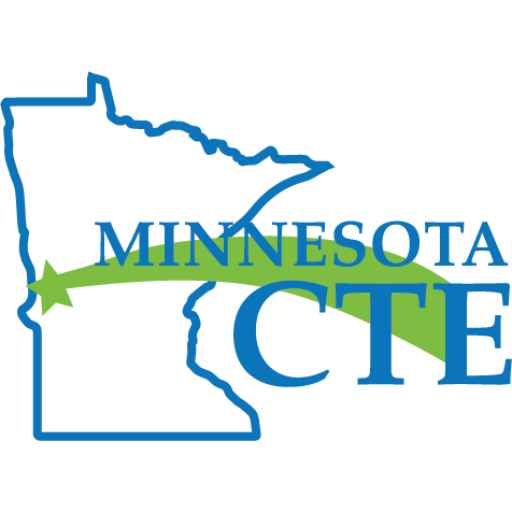The purpose of this report is to underscore the impactful work being done across the state to prepare students for high-demand careers while supporting educators with teacher licensure, professional development, mentoring, and retention programs. We describe our methodology for how we conducted this research here. We present and summarize these data as described by districts during STAR reporting to PELSB. During analysis, we noticed several errors made by districts (e.g., submitting the wrong teacher’s name, discrepancies in age, years of experience for the same teacher working at two different districts). That said, these data still have high face validity. We estimate a less than a 1% margin of error.
Past Reports
2023-2024 State of Minnesota CTE Report (2024/11/26)
We will conduct a similar analysis for 2024-2025 after PELSB publishes STAR data (estimated May 2025).
Methodology
MN CTE staff created this annual report by conducting a secondary analysis of existing data, including PELSB Staff Automated Reporting (STAR) data and PELSB File Folder licensure data. We reviewed teachers that districts reported in their 2023-2024 STAR data as teaching within a “CTE assignment” (i.e., column 4, “Assignment Description” on PELSB’s Licensure Assignment Table), as well as assignments that teachers with CTE licenses can teach within, but are not considered a CTE assignment by PELSB (e.g., 200300 – Horticulture/Animal or Crop Production). Generally, to align with MDE Program Approval and Perkins reporting, districts should not be using these non-CTE assignments, but we realized many CTE teachers with appropriate licenses were missing if we did not initially include these data. We later cross-checked these assignments against licenses to confirm they were appropriate.
In this analysis, we presented and summarized data as originally reported by the sources. During the evaluation process, we identified potential errors, with discrepancies appearing in less than 1% of the reported data. To enhance reliability, we applied rigorous evaluation methods, including re-collecting a sample of data and conducting a manual audit of one content area using a teacher directory, which helped to reveal potential reporting errors. While the primary focus remained to present data as reported, these methods improved the reliability of our analysis by identifying and accounting for potential inaccuracies.
To validate that these teachers had appropriate CTE licenses to teach within these assignments, we then cross-checked each teacher’s license within these assignments using File Folder data. To avoid duplication of teachers assigned to multiple sites, we identified the primary teaching assignments for each File Folder Number. Based on the reported data for each teacher, we calculated teacher summaries for each content area to identify teacher gender, race/ethnicity, age, and teaching experience.
The average number of years licensed was based on the date each teacher first obtained their teaching license and extended to June 2024. This calculation reflected the total time since initial licensure, regardless of any breaks or periods in which the teacher may not have been actively teaching. Therefore, it did not account for gaps in employment or periods when the teacher was not engaged in teaching, such as leaves of absence or career changes outside of education, but was based on the number of years since the teacher’s initial license began, and could then function as an upper limit for years teaching. The average number of years teaching was as reported by districts, though districts reported this information for less than 20% of teachers.
Salary data in this analysis included only teachers who held full-time contracts. We excluded teachers employed on part-time contracts, or those with reduced hours, from the salary calculation to ensure that the average reflected the compensation for full-time teaching positions. In our analysis, we excluded certain outlier data that appeared inconsistent with expected patterns. Specifically for salary calculations, we removed:
– Part-time teachers: All part-time teacher salary data.
– Teachers at multiple districts: Teachers reported as teaching in multiple school districts, as their salary data could be skewed by employment reporting inconsistencies across different districts.
– Full-time teachers with more than 230 contract days: Individuals with more than 230 contract days, as their salary data could be skewed by employment reporting inconsistencies with administrative roles and extended contracts across different districts.
– Full-time teachers with fewer than 100 contract days: Full-time teachers who were reported to have fewer than 100 contract days, as this deviates from typical full-time contract expectations and suggests potential data inaccuracies.
– Full-time teachers with outlier salaries reported: Instances where full-time teachers were reported with salaries less than $32,732 for similar positions, as these are likely indicative of reporting errors or misclassification based on an analysis of school district contracts and Education Minnesota steps and lanes data. We also excluded any salaries more than $120,000, as all individuals reported greater than that threshold held an administrative license.
By excluding these outliers, we aimed to ensure the accuracy and representativeness of these data, focusing on cases that aligned with common teacher employment patterns.
Though some teachers worked at multiple districts, we only included one record per teacher when we analyzed demographic and other individual teacher trends. In cases where a teacher’s demographic data was inconsistently reported across districts—for example, fully provided by one district but left blank by others—we included those available data from any reporting district, prioritizing sources that provided complete demographic data. This approach ensured that partial data contributions were captured, allowing for a more complete dataset while acknowledging variability in district reporting practices and enhancing reliability through the use of more comprehensive sources.
Finally, we used the previously described procedures to calculate summaries of school districts and the teachers within each district per service cooperative (as defined by the Minnesota Department of Education in alignment with Economic Development Regions).


